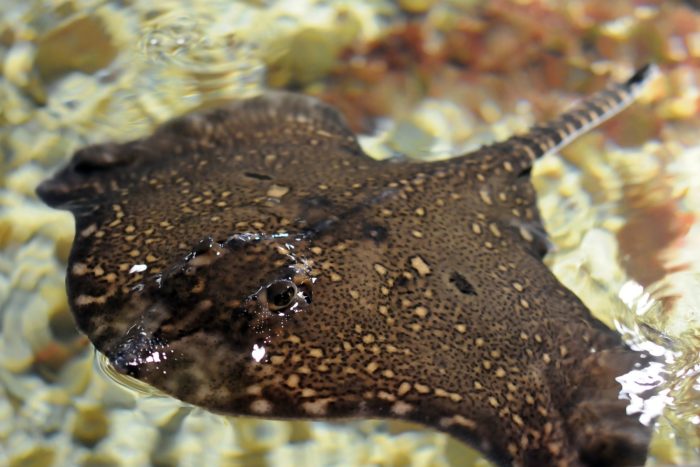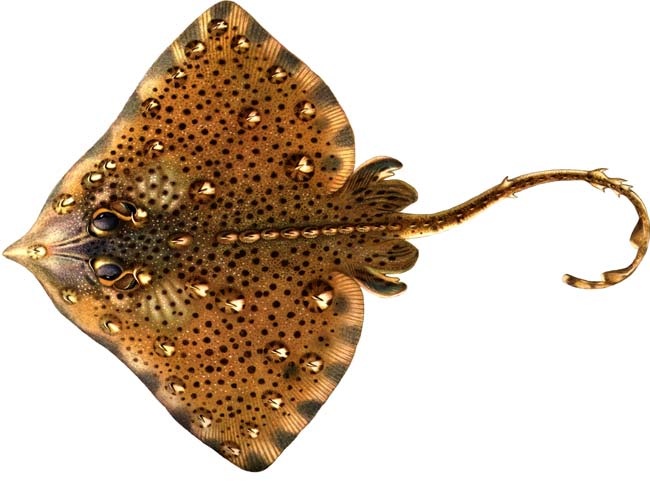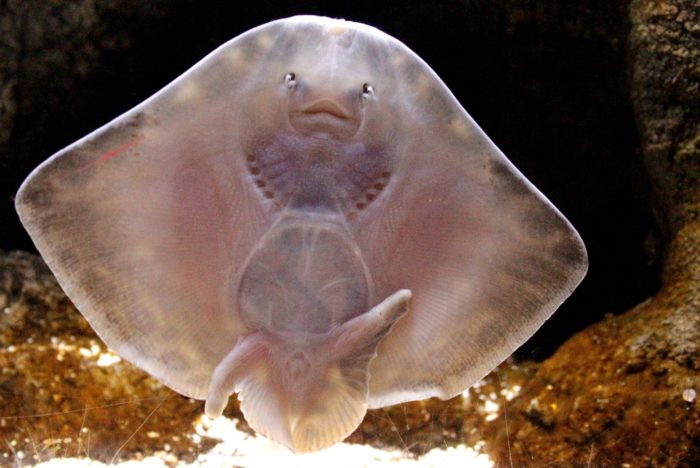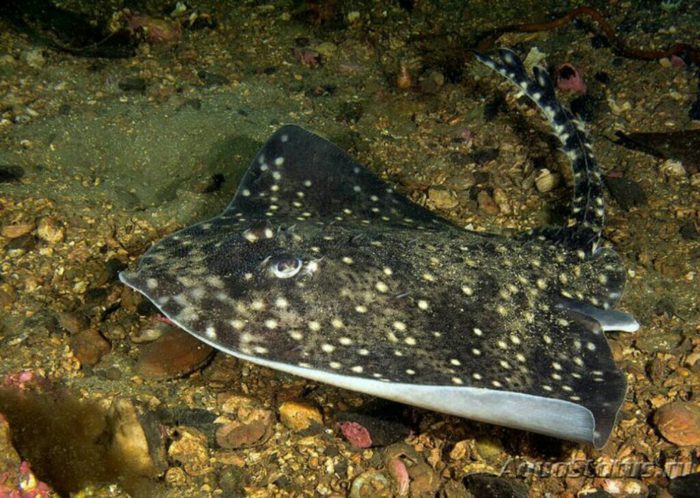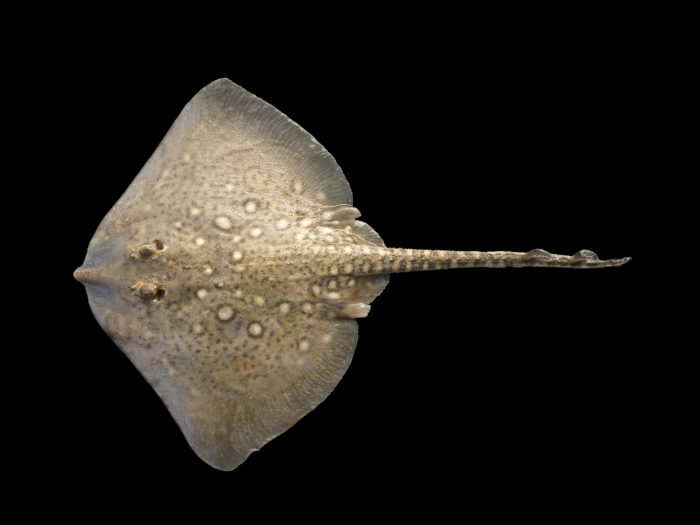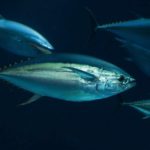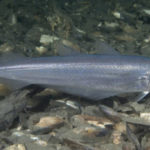The spiny stingray, also called the sea fox, is one of the representatives of the order of stingrays that can be found in the Anapa region. This impressive species of stingray, although not as dangerous as its relative, still requires special attention and caution. The sharp muzzle, reminiscent of the nose of a fox, gave it its name. In addition, the spiny stingray has high camouflage abilities.
Description of the fish
The sea fox, or stingray, has a special appearance that differs from other aquatic inhabitants. It belongs to the migratory stingrays, which are considered semi-anadromous spring fish.Outwardly they resemble a frying pan or flounder, but they lack a bone skeleton, and its place is taken by cartilaginous branches.
One of the features of the stingray is its wing-like fins. They are made up of muscles and covered with skin, which allows them to move with smooth movements. The stingray tail is an extension of the dorsal cartilage containing a bony spine. This spike is used as a weapon for self-defense.
The mouth is filled with plates designed for grinding food. This helps the stingray easily capture and swallow its prey, which it finds at the bottom of the sea. The body is covered with modified placoid scales that resemble teeth. These jagged structures contain blood vessels and nerve endings, giving them special sensitivity.
The "fox" is also characterized by the presence of sharp spines on its tail and back. These thorns are dangerous and cause painful wounds to the enemy. They are part of the stingray's defense mechanism against predators or other threats.
It is important to note that this fish has developed sensory organs. She has chemical, visual, and acousticolateral sensory organs that help her navigate her environment, find food, and avoid danger.
Overall, this fish is a unique creature with adapted physical characteristics and developed sensory organs that allow it to survive and adapt to the marine environment. Its appearance reflects these adaptations and makes it a unique sea creature.
Appearance
The stingray has an interesting appearance and is distinguished by its spotted coloring, limited to the black and white spectrum. This coloring is considered one of the characteristic features of stingrays.
A light purple tint is noticeable on the white belly of the sea chanterelle, especially in the lower part of the fins.This shade creates a beautiful contrast with the main color and gives the stingray some uniqueness.
On the back of the stingray, the main color is brown, with a pattern of light and dark spots. Spots on stingrays vary in size and shape. They are large yellowish-white or small and black. Sometimes there are individuals whose back is dotted with small white spots, which creates an additional pattern.
These varied colors and patterns on the stingray's body help it camouflage and blend in with its environment. They provide protection from predators and allow them to hunt prey effectively. Thanks to their protective coloration, the fish is well hidden on the seabed or in vegetation, which provides it with an advantage in survival.
In general, the appearance of the "fox" is considered to be the result of natural selection, which helped it adapt to its environment. The spotted coloring and patterns on the body of the stingray make it not only functionally adapted, but also a beautiful creature that surprises with its appearance.
Habitat
This fish is considered an inhabitant of the coastal waters of the eastern Atlantic Ocean and is characterized by a wide distribution area. It is found in several regions, starting from the coasts of Iceland and Norway and extending to the North Sea.
In addition to the northern regions, the sea fox is also found off the coast of South Africa. This means that its distribution range covers most of the eastern Atlantic coast.
Habitats vary depending on season and migrations. During cold periods of the year, individuals are usually found in northern latitudes, closer to the poles, where the water is cooler. During warm seasons, they move south, where they search for food and breed in warm waters.
This fish prefers coastal areas where the ground topography is varied, including sea islands, sand dunes, seabeds with seagrass and other underwater formations. It lives at depths of up to 200 meters, but most often swims at shallower depths, where more food is present.
Life cycle features
The sea fox lives at the bottom level, preferring a sandy or muddy bottom at depths of 20 to 300 meters. It is able to adapt and live at depths of up to 577 meters. The stingray leads a motionless lifestyle, hunts slowly and moves carefully along the bottom using its wing fins.
It feeds on bottom-dwelling invertebrates and uses its mouth to grind and crush food. It has developed sensory organs that help it navigate and find food, and its coloring promotes camouflage. The life of the “fox” in the depths of the sea continues to be a little-studied area.
Reproduction
Mating of stingrays, including this fish, occurs in the spring. Females lay eggs about 3 centimeters long daily for a long time. The number of eggs a female produces depends on the species and ranges from 50 to 170 eggs per year.
Benefits for people
The sea fox, or spiny stingray, has not only an ecological role in marine ecosystems, but also practical value for humans.
The benefits that the “fox” can bring:
- Liver and fat rendering.Sea fox liver is a valuable product from which high-quality fat is obtained. This fat is used in the food industry to make products such as cosmetics, oils and food additives. Rendering fat allows you to obtain valuable polyunsaturated fatty acids, which are important for human health.
- Medical research. Some peoples use sea fox in alternative medicine. Her liver and other body parts are suitable for research to identify potential dangers from new medicinal properties or bioactive compounds.
- Industrial use. The remaining parts of the carcass of this fish, such as the tail and skin, are used industrially to produce many products.
- The nutritional value. Its meat is considered a delicacy and has a delicate taste. It is rich in proteins, fatty amino acids, phosphorus, magnesium, iodine, copper and vitamins A and PP. Sea fox is used in cooking to prepare delicious dishes that have nutritional value.
However, it is important to note that the use of sea fox and its products must take into account the sustainability of their populations. Fisheries and industrial activities must be regulated and controlled to prevent overfishing and maintain balance in marine ecosystems.
Interesting Facts
This stingray is a unique and interesting sea creature. Let's talk in more detail about the important aspects of the life and characteristics of the sea fox:
- Safety for people. The “fox” usually does not pose a threat to people and attacks only if it senses a danger to life. She uses needles and spikes only for self-defense, and attacks on people are extremely rare.
- Variety of species.The stingray family includes 29 genera and about 220 species, according to ichthyologists. This diversity of species makes the sea fox an interesting research subject for scientists, and each species has unique characteristics and features.
- Threat of extinction. It is important to note that 45 species of stingrays are already endangered. This is due to various factors, including commercial fishing, changes in the marine environment, pollution and habitat loss. The conservation and protection of these species are becoming important for maintaining the biodiversity of marine ecosystems.
- Dimensions and features. Manta rays are the largest rays, with a “wingspan” reaching up to 9 meters and weighing up to three tons. Some species of stingrays, such as Dasyatis brevicaudata, have a black “wing” span of more than two meters. They live at great depths, for example, up to 480 meters.
- Role in the ecosystem. Sea foxes play a significant role in ocean ecosystems. In open water, stingrays are prey for a number of predators, including killer whales, sharks, sea lions and seals. They remain an important part of the food chain, and maintaining their populations is important to maintaining balance in marine ecosystems.
- Cultural significance. In the past, stingray skin was used to create the hilts of Japanese katana swords, indicating the cultural significance and use of this fish in various aspects of human life.
Research and understanding of the sea fox's lifestyle remains important for the conservation and conservation of this species in the oceans and for maintaining the balance of marine ecosystems.

